"Oh, you hate your job? Why didn't you say so? There's a support group for that. It's called EVERYBODY, and they meet at the bar." -Drew Carey
When you think of a galaxy, you probably think of a bright, dense core with huge, swirling outstretched spiral arms. Something, perhaps, like the Silverado Galaxy, below.
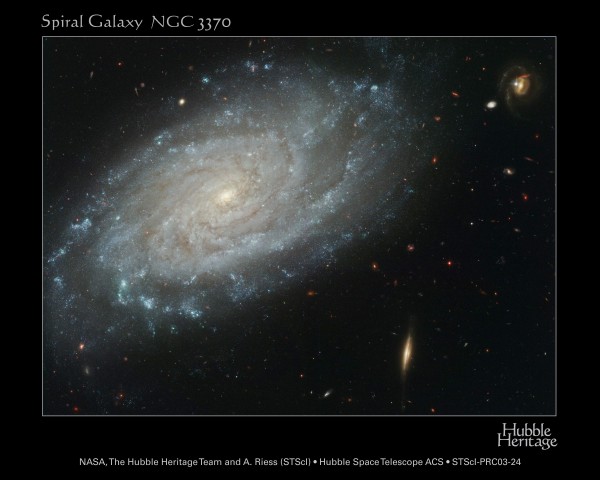
And while there are many galaxies like this, it isn't most of them! Oh, sure, most galaxies do have spiral arms, but they have something else, too. The Southern Pinwheel galaxy's got it,
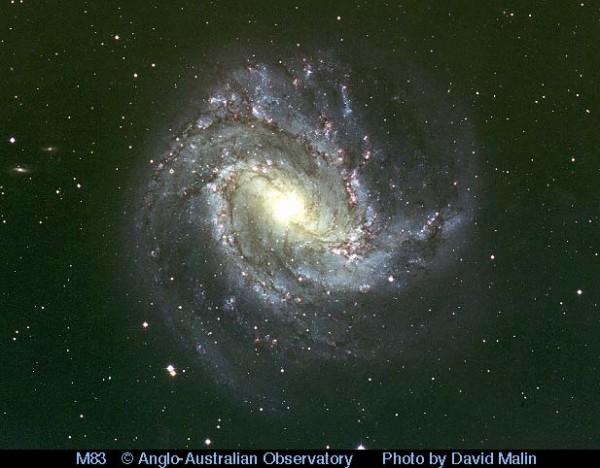
the gorgeous NGC 1672's got it,
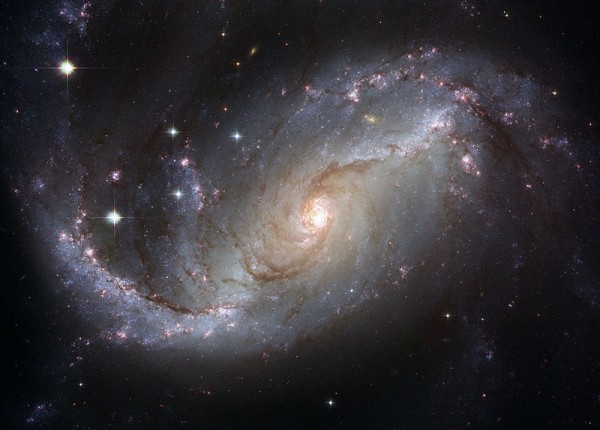
as does NGC 1300, which is directly face-on to us,

and some galaxies, like the Sculptor Galaxy, barely show it to us at all, but still have it. And you can see it, even though it's nearly edge-on, if you look in the right light.
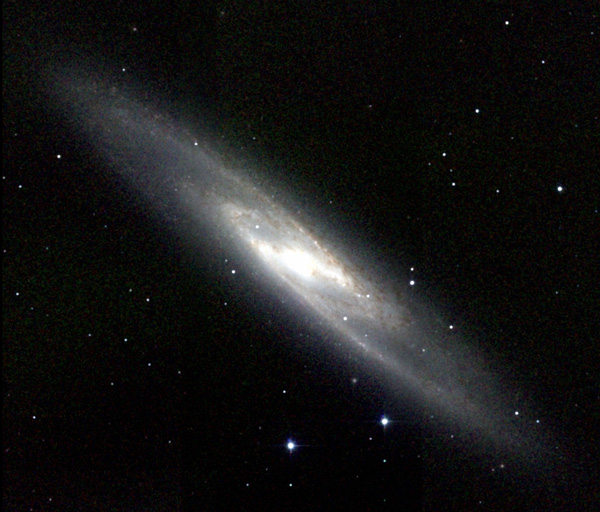
I'm talking, of course, about a bar! It turns out, of all the spiral galaxies we've ever discovered in the Universe, two out of three have bars!
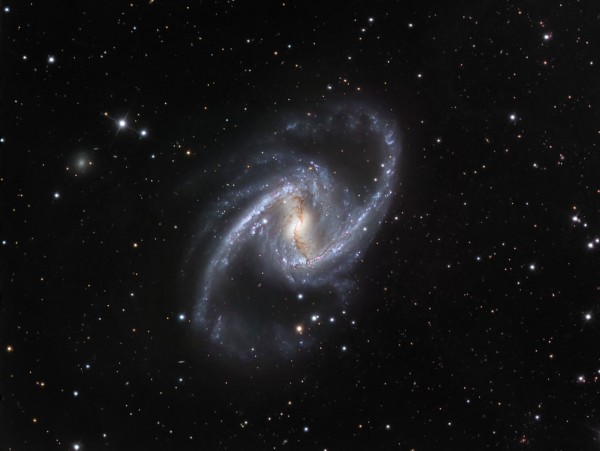
(That's not us; that's the Great Barred Spiral Galaxy, which is about twice as big as us, but which looks a lot like we think we look.)
With a length of 27,000 light-years, the Milky Way's bar extends more than halfway to the Sun's position, and makes our galaxy even more common that we'd previously thought.
How do galaxies get bars, and what do these bars serve to do?
The center of the galaxy produces and sends out density waves, which become just slightly denser (by about 10-20%) than a typical place -- without a density wave -- in a galaxy.

The density waves attract gas and dust, and pre-existing stars! Furthermore, they provide a home for new stars to form, and studies even indicate that the bars funnel gas towards the core!
This could be bad for the gas, to get caught in the funnel created by the bar. Remember what we've got at the core of every galaxy?
A supermassive black hole! And if you remember what happens to matter falling into black holes, you'll learn that this is one way to take a quiet, ordinary galaxy, and turn it into an active, jet-spewing engine!
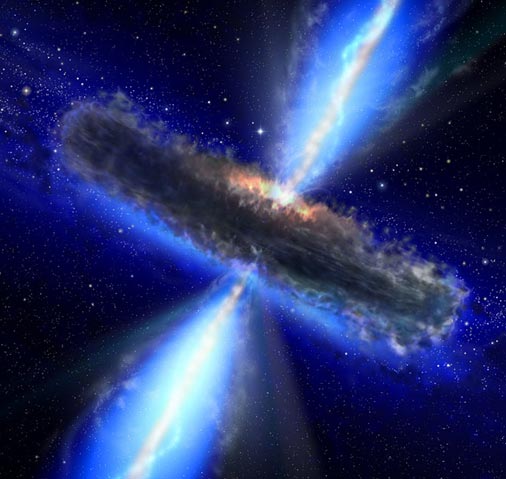
This is really amazing, because when we look at galaxies a long time ago, when they were younger, we find that only 20% of them had bars, as opposed to 2 out of 3 today! So if you've got your heart set on going to the bar, remember that our galaxy's already got one, and -- as it's probably pretty new -- it's no dive!
This are pretty recent discoveries, about how many galaxies have bars versus how many don't (1999), about the bar in our own galaxy (2005), and about the fact that most younger ones didn't have one (2007). So enjoy the new perspective on spiral galaxies, and when you see one without a bar, tell it to grow up, already!

A very nice and clear description of bar formation, something I always wondered about as a kid. But, I can only assume that you and Phil Plait have decided to start coordinating your blog posts ...
http://blogs.discovermagazine.com/badastronomy/2010/09/24/setting-the-b…
This has absolutely nothing to do with bars in galaxies (which is really cool, as are most of your entries, but I don't have much to say about them that hasn't already been summed up by my first sentiment), so I apologize for the off topic nature of my post.
I was watching the Dark Future of the Sun on the history channel, and there was an off-handed comment about Venus. They mentioned that Venus could be a glimpse into the future of earth, what with the runaway greenhouse gasses and so forth. I've been aware for a while that it was in the Goldilocks zone, and heard from another source that it had a moon at one point. So I began to wonder in general, how similar is Venus to Earth? Specifically 2 things: 1.) Would it have been possible in times long past that life evolved there, and 2.) if so, would we be able to find any evidence, given the molten hellscape that it's surface now is?
With a length of 27,000 light-years, the Milky Way's bar extends more than halfway to the Sun's position...
Where are we relative to the MW bar? Say, for the sake of reference, that the arms of the bar are at 12 o'clock and 6 o'clock - how does Sol line up?
And do all the bars extend out from galactic centers with the same near-perfect symmetry seen in the above pictures?
An interesting consequence of the Milky Way having a bar roughly lined up in our direction is that we get quite a few "gravity microlensing" events in the direction of the center of the galaxy. The probability of two stars lining up is low, so it helps having a bar oriented this way.
Microlensing events are a great way of getting information impossible to get any other way. They have even confirmed that a close binary has at least one planet circling the two stars.
How is it we are able to measure our approximate location within the milky way when we can't send a probe such a great distance to look in from the outside? How certain are we of our exact location at this point in time? Has the understanding of our location changed over the course of time due to better technologies and the ability to take more accurate measurements; and if so by how much were our original estimate off?
Very nice, actually pretty amazing science.
Your wiki link refers to "density waves" as "heavy sound".
Does that mean that it is an electromagnetic phenomenon? I suspect not.
I suspect the "density wave" is just dues to stars, dust, gas moving through the narrow dimension of an gravitationally caused elliptical orbits. Am I on the right track?
Does space ever end? Is there ever a point where you can't go on anymore, for whatever reason there may be? Also, someday will the world be destroyed or swallowed up by a black hole or something of that sort?
How do scientist name stars?
Cinderella under the umbrella By Rhianna and Chris Brown.
Candy shop by 50 cent and olivia.
I like you so much better when your naked by Ida maria (Really catchy and upbeat)
I think that you have alot of information, but theres on thing that im wondering and that is why the earth tilts at 23.4 degrees?
This might sound obvious, but the more fitted the style is, the more work you will have to do to make it fit right. Patterns that use gathers or pleats to add shaping are easier to fit. Knits are also easier to fit; you can use a dressy knit fabric and look very evening. Knits can be fussy to sew, but so can satin and other dress fabrics, so I think it's the same either way.
I don't think so!! *sing-song voice* You have other things to worry about other than chasing after a prat's wife dear Harry.
If you look at water going down a drain you will see the same bars seen in a spiral galaxy. I guess you could say we are all going down the drain into a black hole.
I have a theory that all planets and stars and galaxies have at their core a piece of a black hole material that originated from the big bang. These particles accumulate matter by virtue of their superior density and or mass.
Gravity is the pull of this dense stuff. You can see the pull from the moon on the oceans of the world. Just imagine multiplying that pull a million times and you would see the effect that a black hole has on the galaxy as a whole. I imagine something similar happened to the oceans that once occupied Mars.
once more into the breach;
If the natural course of events on a galactic scale is for all matter to be aggregated or condensed into absolute density as existed just prior to the big bang, and then released in an explosion, would not the time between these absolute density states decrease until there was no time interval between explosions at all and explosions stopped altogether?
On another note; If this theory that the black hole dynamic is the driving force of star formation and destruction then how is it playing out on our planet?
I see the tectonic plates moving to accommodate a shrinking core as the core becomes more dense and light basalts are thrown up toward the surface.
If you could pull the skin or crust of the planet taught to eliminate all the valleys and mountains you would have an envelope that would accommodate a much larger planet. I can't think of another force greater than gravity. I can't come up with any other motivation to drive entire continents under each other. A shrinking planet is easier to understand as a reason why tectonic plates would be forced to overlap each other.
The rate of this shrinkage is probably within the capability of the scientific community to decipher if they did not dismiss this idea at the outset.
With the known age of the planet and the known current circumference and the extrapolated approximation of a smooth skin circumference, could we not come up with a subduction rate that would be useful? Predicting earth quakes might be useful. I suspect after each earthquake the planet is a bit smaller in circumference.